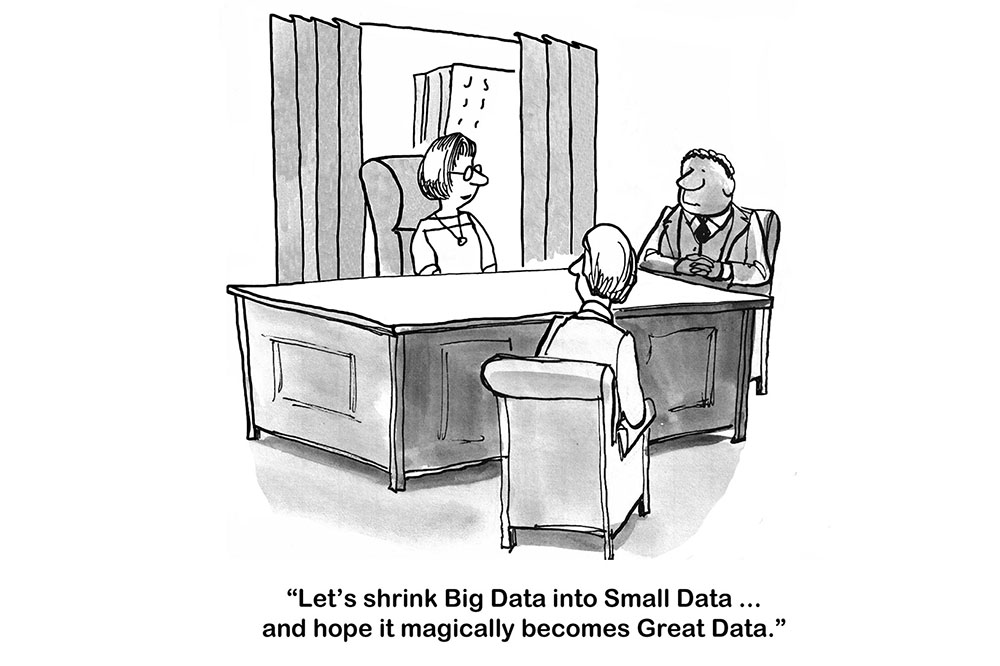While most companies still talk about business and IT alignment, the alignment between business and IT implies that business and IT are still opposite of each other. Companies are transforming themselves to become technology-empowered and make technology a core part of their business. For this transformation to work, companies should be thinking about the relationship between business and IT as the left and right sides of a human brain. Just like no one can function fully with only one side of the brain, business and IT must work together for any technology-empowered company.
I had a video conference with the CEO of an insurance company recently. We had a good chat about the Chief Digital and Information Officer position that he is trying to fill. The main discussion centered around digital transformation and how to make it happen at his company. We spent a lot of time discussing digital strategy and transformation and the relationship between business and IT. Eventually, we landed on the image of the business being the right brain and IT being the left brain and every company needs the whole organ to be able to function. Without this whole organ, it will be difficult for any digital transformation to generate an actual impact.
So, why the analogy of left and right brains? The human brain is a magnificent invention. The left side of the brain is responsible for controlling the right side of the body. It also performs tasks that focus on logic, e.g. in science and mathematics. On the other hand, the right side of the brain coordinates the left side of the body and performs tasks that are related to creativity and arts. The two sides of a human brain look alike, but the ways they process information are vastly different. But a human being must have the two halves of the brain to work together, despite their contrasting styles.
Different parts of the brain are connected by nerve fibers. While the brain can still function if an injury severed the connection between sides, the lack of integration would cause impairment. Furthermore, the human brain is constantly reorganizing itself. It’s adaptable to change, whether it’s physical or through life experience. It’s tailor-made for learning.
There are very uncanny similarities between business and IT and the left and right-hand sides of a human brain. IT is more like the left brain and deals with technology with logic and precision. Business is more like the right brain and deals more with people – customers and internal employees.
IT, the left brain, tends to be more logical and deal with hard facts. There are a number of factors that characterize the “Left Brain” IT:
- Application as an overarching goal: IT’s main objective is often to design and develop an application that automates current business processes. The success measure for this goal is on-time delivery and on-budget expense management.
- Binary Black and White over Gray: Given that computers are programmed with the binary of zero and one, it is often difficult for IT to accept the gray since it is impossible to program gray in computer science. Hence IT tends to focus on formal rules and governance and use those as mechanisms to enforce the structure.
- Long term time horizon: IT solutions often would take multiple years to design, develop, and deploy. Once deployed, the systems often stay in place for years and even decades. This multi-year time horizon forces IT to focus more on the long term sustainability of the solutions and want to ensure that the technology decisions that are being made today will remain viable years down the road.
- Emphasis on analysis: For any given problem in IT, there are often a multitude of choices to solve the problem. IT frequently must deliberate on the various choices and attempt to arrive at the best answer. The multitude of choices can be about hardware and software companies, consulting and systems integration services providers, and even contract and procurement terms and conditions. Often there is no right or wrong answer and IT won’t be able to see the consequences of choices until it has moved into the execution phase. This would require IT to spend a significant amount of time to review options and make decisions. Sometimes a vendor selection process itself would be a multi-year effort.
- Qualitative communication: Technology is complex. To effectively communicate, technologists tend to favor communication with diagrams, schemas, and written qualitative descriptions.
Business, the right brain, on the other hand, is more about people and the revenue that they need to deliver. This is why the way business is often wired can be viewed as the polar opposite of the left brain IT:
- $ as an overarching goal – Business’s overall objective is often revenue growth and cost reduction where IT solution is just a part of the overall solution. This objective is vastly different from IT’s goal of delivering an IT application. This misalignment of goals often creates the single biggest challenge for both parties to work together. While IT systems can be critical, the technology itself is not going to be one of the top 3 focuses for business.
- Gray – Chinese leader Deng Xiaoping famously said, “It doesn’t matter whether a cat is black or white, as long as it catches mice.” This statement reflects the thinking of many business executives. They don’t necessarily care if the IT solution is elegant or not. They care more about the time to market and if the solution works.
- Near Term time horizon – Business, especially for public companies, must deliver on a schedule that tends to favor more immediate actions and quick wins. Every quarter, every year, a company needs to deliver planned value to its shareholders. Thus business often doesn’t have the luxury to wait for the perfect solution to be designed and developed.
- Emphasis on decisions and actions – Given that business doesn’t always have the luxury of time on their side, they tend to favor action over analysis. This disconnect between the business’s bias towards action vs. IT’s bias towards analysis is often a major cause for finger pointing.
- Quantitative communication style: “Show me the money!” – this is the typical style of many business executives. They trust numbers and dollars more than anything. The ability of creating a business case for IT applications and solutions is unfortunately the Achilles heel for many IT departments, sometimes even for the business departments. It is vastly easier to estimate the cost than to estimate the benefits.
The diagram below attempts to depict the differences between the two brains – “Left Brain” of IT and “Right-brain” of Business.
Nowadays, technology is becoming the center of all industries and all companies. To support such transformation to become technology centric enterprises, the future is no longer business/IT alignment, or the left brain of IT waiting for directions from the right brain of Business before the left brain does anything. The future is business and IT fully integrated where both sides of the brain must learn to work together to power the tech-centric companies.
Learning from the practices to make a brain function more effectively and holistically, I would suggest companies consider the following actions:
- Understand the nuances of the other side of the brain:
While the left and right brain theory remains popular, recent research indicates that this generalization of right/ left-brain function is over simplified and not entirely true. Both sides of the brain are required in order to perform functions like math and language. In the case of Business and IT, it is even more prominent that companies must have both Business and IT working together equally to transition to the future tech-centric world. However, it is imperative for both hemispheres of the brain to understand the nuances of how brains work. Thus it’s critical for Business and IT to understand the nuances of their partners.
- Learn to adapt and strike the right balance:
80 years ago, psychologist John Stroop created an interesting test to gauge the ability of the brain’s two sides to work together. He asked the test participants to use alternate-colored pens to write a series of color names. He then asked the participants to try to read only the color. A participant may write ‘Yellow’ using a blue pen, but the challenge is to read it as Yellow and so on. This conflict-inducing test forces the activation of anterior cingulate, a section of the brain that lies between the left and right hemispheres and could help resolve conflicts between them.
Similar exercises can be done for Business and IT so that both can learn to adapt and strike better balances. Once the differences and nuances of how business and IT work are well understood, companies can design and deploy a number of key exercises to get business and IT to function well together. Ideas for exercises could include hackathons to solve a specific business problem with technology and strategy sprints to develop a business plan using technology. Those exercises will get both business and IT together to work on the hands that they don’t always use – business on how to think about technology and IT on how to create business plans.
- Rotate people between Business and IT:
The left and right hemispheres of a brain are hard-wired and can’t switch sides. Business and IT luckily can. Some of the best CIOs that I have worked with in the past have experience working in both business and IT. The companies they worked for provided rotation mechanisms so that executives have broad experiences across the whole enterprise. A rotation program where business and IT staff can rotate to the other side and learn how the other side works will be critical for the future of tech-centric companies. With many companies implementing agile and cross-functional teams, an alternative to the rotation program is for Business and IT to play different roles on such cross-functional teams.
True technology companies such as Amazon and Google don’t have internal lines between business and technology. Everyone is focusing on using technology available to solve specific user problems. In a technology-empowered enterprise, the line between business and IT will disappear too, just like the left brain and right brain inherently know how to work together to allow human beings to function.



